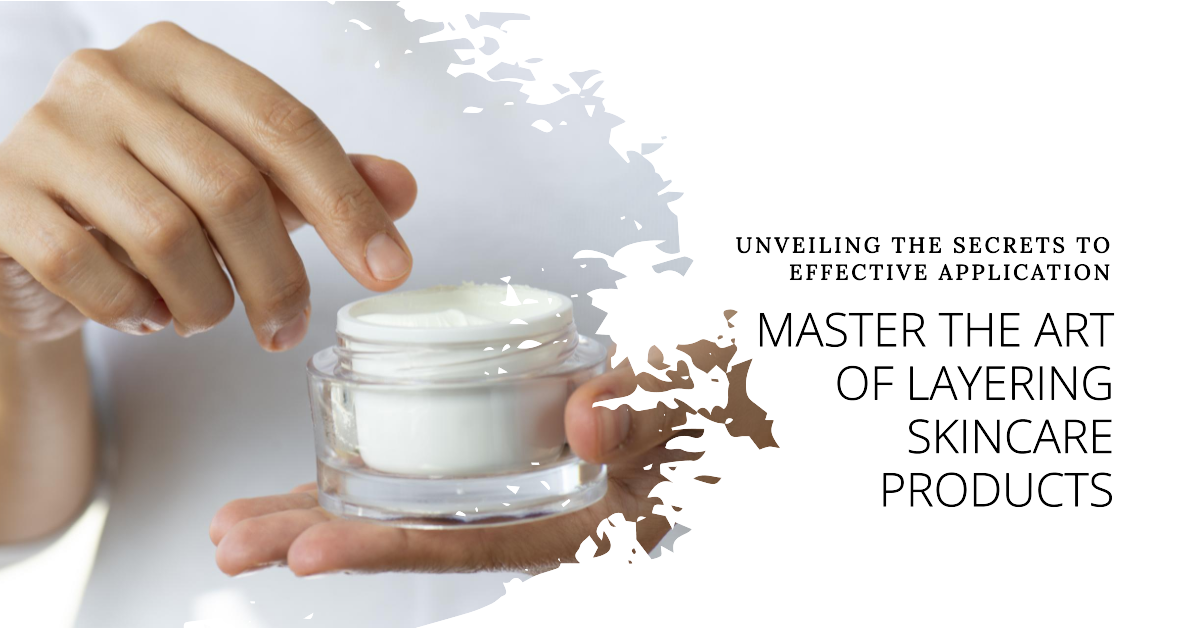The world of skincare is a treasure trove of creams, serums, toners, and more – each promising to transform your skin. But with such an array of products available, it’s easy to feel overwhelmed. The question arises: can you layer different skincare products, and if so, how do you navigate the labyrinth of application order? In this comprehensive guide, we’ll unravel the mysteries of layering skincare products, ensuring that you achieve the optimal benefits from each potion you apply.
In This Article
The Foundation: Cleanse and Tone
Before embarking on your skincare journey, ensure your canvas is clean and primed. Begin by using a mild cleanser to eliminate dirt, makeup, and impurities. Follow up with a toner to balance your skin’s pH levels and prepare it for the products that follow.
Understanding the Science of Layering
The golden rule of layering skincare products is to follow the order of thinnest to thickest consistency. This principle ensures that each product can penetrate the skin effectively without creating a barrier. Also, consider the active ingredients in each product – some may not play well together, while others may enhance each other’s effects.
Layering Order: A Step-by-Step Guide
- Serums and Treatment Products: These are lightweight and contain concentrated active ingredients. Apply them immediately after toning to maximize absorption. Examples include vitamin C serums, hyaluronic acid serums, and acne treatments.
- Prescription Treatments: If you’re using prescription treatments like retinoids or prescription-strength acne medications, they usually go next. However, always consult your dermatologist for specific instructions.
- Eye Cream: Delicate skin around the eyes benefits from a lightweight eye cream. Apply a small amount using your ring finger to avoid tugging on the skin.
- Moisturizer: Lock in the goodness of previous layers with a nourishing moisturizer. Choose one that suits your skin type – lightweight for oily skin and richer for dry skin.
- Sunscreen: In the morning, the final step is sunscreen. Shield your skin from harmful UV rays by applying a broad-spectrum SPF of at least 30.
Special Considerations
- Acids and Retinoids: Products containing alpha hydroxy acids (AHAs), beta hydroxy acids (BHAs), or retinoids should typically be used at night. These ingredients can increase skin sensitivity, so avoid layering them with other strong actives.
- Wait Time: Allow a few minutes between applying different products, especially if they contain active ingredients. This prevents them from neutralizing each other or causing irritation.
- Patch Testing: Before you dive into a new skincare regimen, it’s wise to perform patch tests on a small area of skin to check for allergic reactions or sensitivity.
The Art of Customization
Remember that skincare is not a one-size-fits-all solution. Factors like skin type, concerns, and sensitivities dictate which products you need and how you layer them. Consulting a dermatologist or skincare professional can provide tailored guidance.
Product Compatibility and Product Recommendations
- The Ordinary Niacinamide 10% + Zinc 1%: This serum can help regulate sebum production and reduce the appearance of blemishes. It can be comfortably layered after cleansing and toning.
- Paula’s Choice 2% BHA Liquid Exfoliant: An excellent BHA exfoliant that can be used after cleansing, before serums. It aids in clearing pores and enhancing the texture of the skin.
- The Ordinary Lactic Acid 10% + HA: It is a fluid serum possessing a gentle exfoliating impact. Both items include components that calm the skin and address the redness and sensitivity commonly linked with acids. (Good Genes employs prickly pear extract, arnica, and aloe; conversely, The Ordinary employs a derivative sourced from the Tasmanian pepperberry plant.) The Ordinary additionally provides added hydration through hyaluronic acid, while Good Genes incorporates licorice and lemongrass aimed at enhancing the look of dark spots and uneven pigmentation
- CeraVe Moisturizing Cream: A nourishing moisturizer suitable for all skin types. Apply it after serums and treatments to lock in hydration.
- EltaMD UV Clear Broad-Spectrum SPF 46: A lightweight sunscreen that should be the last step in your morning routine.
Layering different skincare products is an art that combines science and personalization. By following the thin-to-thick principle and considering active ingredient compatibility, you can orchestrate a symphony of products that enhance the health and radiance of your skin. Remember that consistency and patience are key to reaping the benefits of your skincare regimen. By mastering the art of layering, you’re not just applying products – you’re crafting a holistic approach to skincare that’s tailored to your unique needs.
Recommended Read: Understanding and Preventing Skincare Pilling: Tips, Do’s, and Don’ts











